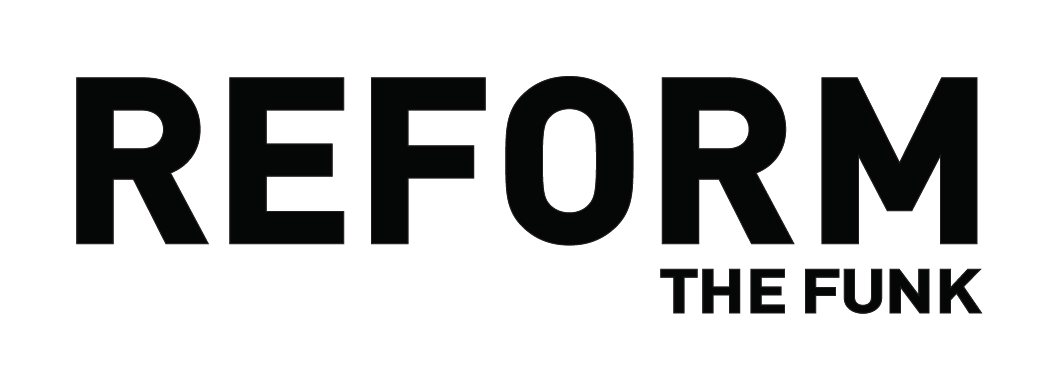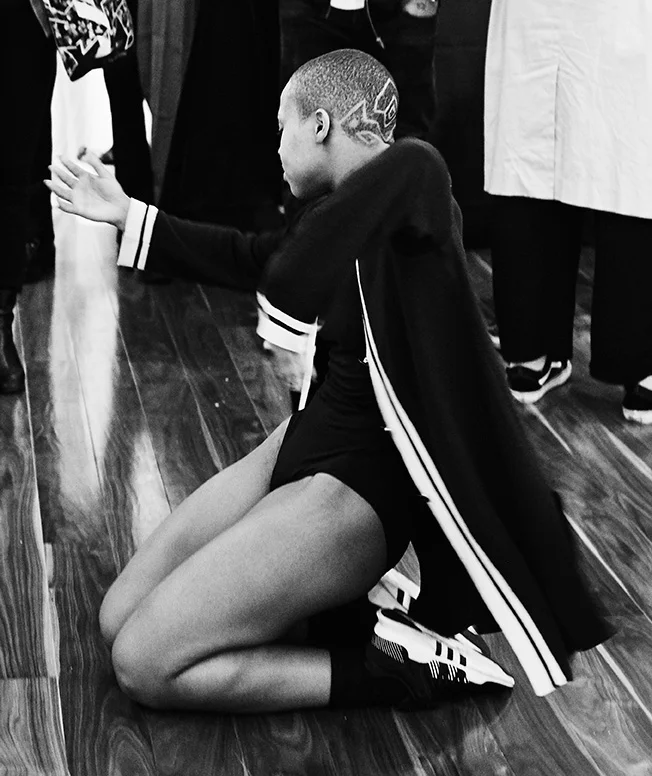Layo and the Joy of Dance.
Given that Layo skipped her graduation to attend a dance job, it's fair to say to say that her passion for dance is her number one priority. In her own words she is "extremely focused and determined when it comes to my art form". Following her interactive dance performance at Reform The Funk's Space exhibition we caught up with the 23 year old freelance dance artist.
Tell us about yourself?
Although I am of Nigerian decent, I'm also proud of being a Black British - born and raised away from the motherland. It is a different experience, being a black Brit and being able to travel and I believe it has a major contribution to my identity as a person and an artist. Being a Nigerian child my parents didn't approve at first when I said I want to dance, but over time, as they saw how passionate I am about dance and the positive impact it had on my growth and character, they came to be extremely supportive and understanding. I see my body as a piece of art, I like to say that my body is somewhat like a canvas, creating art in time and space.
When did you realise that dance was something that you wanted to do professionally?
It's funny you ask that, it's still sinking in that I am a working professional dance artist. I have been working dance jobs since graduating university in 2016 and I'm only now acknowledging that I am a professional dancer. I think a major part of this is as I'm a black dancer, my art isn't always valid or understood. I have a degree, I studied dance, and this isn't just learning how to dance, but literally studying it. Even after working with a world renowned choreographer (Trjal Harrell) and getting head hunted to collaborate with other choreographers internationally I never had a moment I realized it was something I want to do professionally. In a sense, I have always wanted to be an artist where dance is my specialty, it is something I embodied and now here I am.
How would you describe your dancing style?
My style is honest, raw and expressive and I mean that in every extremity. I refer to myself as a movement artist. I enjoy erratic movement, stillness, pedestrian, experimenting with social dance and exploring ways traditional African dance can be explored through the heart, soul and body of a millennial. I discussed my training in University, I have also done some training in: waacking, breaking, afro-house, jazz, contemporary, hip-hop styles, traditional African dance techniques and afro beat. All these things have contributed to my style.
““I have always been more curious about learning how to use my body rather than learning different styles”.”
I always like to play with different elements I've learned and spend a lot of my time exploring movement. I do a lot more improvisation than I choreograph, but I do have my own dance style. I am beginning to explore this more through choreographing on others and creating performance art pieces.
What is the importance of dance, as an art form in your life?
Dance is my entire life. It has been my anchor since I can ever remember. I feel dance is an art form with a special goal. What exactly this goal is, I am unsure, but I feel it has a lot to do with changing and challenging perspectives in society. Dance, for me, is the purest form of expression; there is no filter between the person dancing and the person who receives it. It is crafting life/art into time and space. I also use dance therapeutically and meditatively. I like to see dance/movement as a way of bringing together ones mind, body and soul a way no other form can do for just anyone. Dance, the same way as art, is everywhere, but within people. It is also an art form, which is being lost and understood in mainstream media. As the time of social media is reaching a breaking point, I believe it is time for bodies in space to be acknowledged and brought to life.
What was the inspiration behind the art piece that you performed at the Space exhibition?
The piece was inspired by my advocacy for the importance of black bodies in art spaces. I wanted bring something new as a black female dance artist. I feel the representation of black bodies is always censored and the brilliance of our bodies and its capabilities are rarely explored in space to its fullest extent. I’ve seen many dance art and performance art pieces where you get to explore vulnerability and really begin to acknowledge the body as not only beautiful, but literally a brilliant piece of art. However, you only see this with white bodies or through a western lens. And even when black bodies are celebrated, I believe it is in ways, which are progressive. A live intimate piece brings different energy, the black body emits it's own unique vibrations.
““I also wanted to push and experiment with the objectification of the black female body. The piece was kind of meant to say ‘hey look, I’m here, I’m a black woman, I love and respect myself and my complexities”.”
I wanted this performance to be raw, expressive and unfiltered. I wanted to inspire black people who want to invest in themselves as artists. We are all connected in one way or another, so I decided to be real, to set a standard and to embody the idea of ownership.
Why do you think it is important to encourage black dancers to be invested in their roots and its dance form?
Western styles aren't made for our bodies. Growing up I was trained in Western styles and I am happy with my training up to now. But I can never forget my teacher in ballet class constantly saying I have a 'duck' bum and I need to tuck it in, or my ballet dancer screaming at me to squeeze my thighs together when my genetic makeup literally doesn't agree with it. African dance was made for us, by us and I think it makes sense to invest an equal amount of time in our own traditional styles and well as any other styles they see fit. Growing up in a world Western world, I can't help but notice the progression in ballet in comparison to African dance and how much it's been ingrained into our minds that ballet is the epitome of dance not only in the western world, but internationally. If you see a ballet dancer they are instantly respected and recognised for their brilliance. You can watch a ballet performance and could know the name of every single move they are performing. Ballet pieces get international tours, funding, commissions, theatre and dance spaces, sponsors the whole lot. A ballet can be analysed artistically or just appreciated aesthetically. I don't see much of this for traditional African dance (if you even ever see it). I think within dance there is still much progression to be made with our traditional dances and styles.
What are your thoughts on the significance of mentorship within the dance community?
As per my comment earlier, I think mentorship from other black dancers in the community is very important. To have black dancers lead by example is very important; we need to build a stronger community, where we respect and value our similarities and our differences. Leadership is essential for growth. Its true that sometimes you need to see something to believe it can happen. For me I look at back female dance artists like Josephine Baker and Eartha Kitt, then I compare them to the likes of Rihanna, Solange and Beyonce in todays day and age. They have all lead movements and made major impacts based on their experiences as black women. Representation is important, but so is good mentorship and communicating intimately with other black artists. Everyone needs a safe space, black people and black bodies deserve safe spaces within dance communities where the leaders are other black people who can understand their experiences and guide others to follow their own path.
Which dancers or choreographers inspire you?
My first dance inspirations are Bob Fosse and Alvin Ailey. I used to be obsessed with Jazz dance and specifically the Fosse style of jazz. Ailey was the first black internationally recognised black dancer that I studied - he is the main reason I was inspired to create a dance company of my own. His work inspired other dancers of colour and gave them opportunities to perform unapologetically, artistically and intelligently. Martha Graham, a female dance practitioner, also inspires me. I love that she created her own dance technique and I love her principles behind her dance technique and company. The fact that even after death, both Ailey and Grahams companies still thrives and uphold their own distinctive styles and values. Another inspiration is Trajal Harrell whose piece I performed last year at the Barbican Centre. In this day and age where dance feels like it is being lost as an art form, he brings a refreshing new approach to movement, dance and bodies in space - his works are also quite timeless and refreshing.
What are your goals for 2018?
My goal this year is to do residencies, develop dance works, perform and learn from other choreographers and to eventually be in a place where I am commissioned as a dance artist. I also want to do more directing, collaborations, choreography and conceptual works. Especially in exhibition spaces and creating visual pieces for film.
I have a high interest in also working behind the camera. Recently I have got into directing visual content like music videos or conceptual art videos.
Credits
Dancer: Layo Adebayo
Director: Marcus Ebanks
Photography: James Anthony Parker
Words: Venetia Faye











